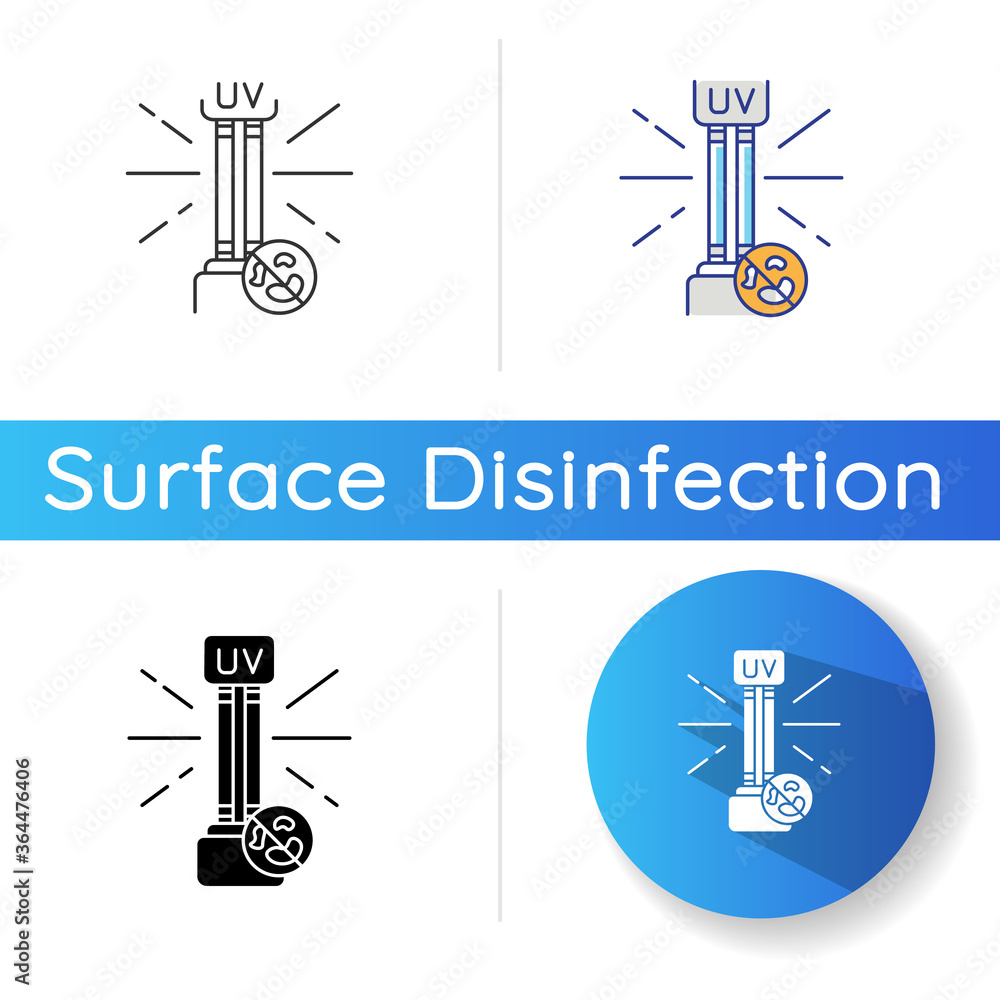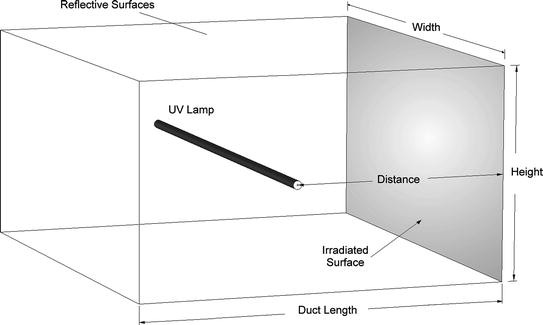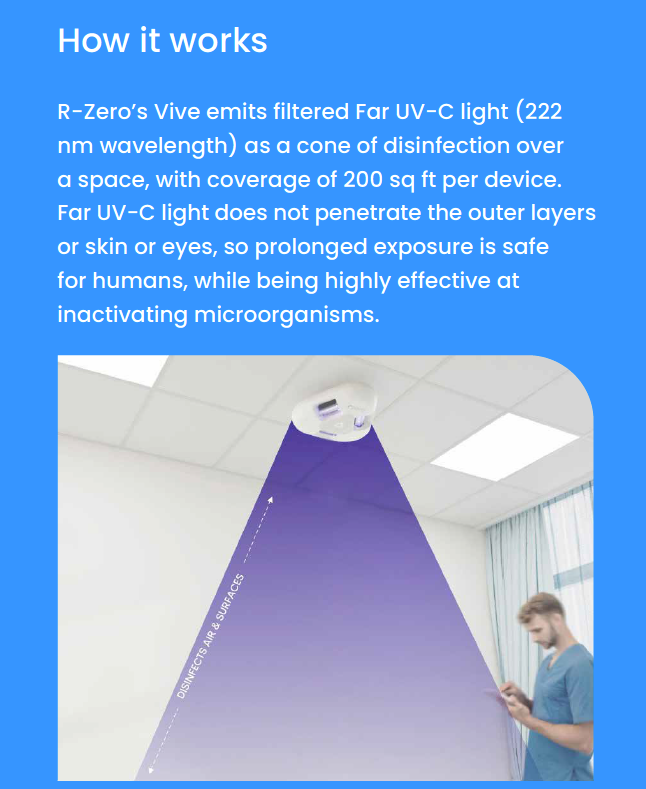Far-UVC UV Sanitizers: Enhancing Hygiene Methods with Accuracy and Effectiveness
Wiki Article
Checking Out the Advantages of Far UVC Light: Changing Indoor Air High Quality
Interior air high quality has actually constantly been a concern, yet the existing international health situation has actually brought it right into sharper focus. As we navigate the difficulties of a post-pandemic globe, discovering ingenious solutions to enhance air top quality has actually come to be critical. One such option that has gained attention is Much UVC light. This advanced modern technology has the prospective to change interior air top quality by properly counteracting air-borne virus without posturing harm to humans. But exactly how specifically does Far UVC light job? What are its health benefits? And exactly how can it add to minimizing allergens in our living spaces? In this conversation, we will check out the interesting world of Much UVC light and uncover its possibility in transforming the way we guard our interior settings.Just How Much UVC Light Works
Far UVC light works by giving off short-wavelength ultraviolet light that has the capacity to permeate and suspend microorganisms. Unlike standard UV light, which can be harmful to human skin and eyes, far UVC light has a shorter wavelength that is absorbed by the external layers of human skin, preventing it from getting to the underlying living cells. This makes it a secure and effective choice for constant sanitation in occupied rooms.When much UVC light is given off, it connects with the DNA and RNA of microorganisms, including bacteria and viruses, disrupting their ability to duplicate and creating them to end up being non-active. The high energy of the short-wavelength light damages the molecular framework of the hereditary product, avoiding the microbes from spreading out and duplicating.

Furthermore, much UVC light can be quickly integrated right into existing lights fixtures, making it an economical service for a large range of applications, consisting of medical care facilities, institutions, offices, and mass transit. Its capability to constantly sanitize busy areas without presenting a threat to human wellness makes much UVC light an appealing technology in the area of interior air quality management.
Much UVC Light's Effect on Airborne Pathogens
The influence of much UVC light on airborne virus is significant in minimizing the transmission of infectious diseases and boosting indoor air top quality. Much UVC light refers to a certain series of ultraviolet light that has a wavelength between 207 and 222 nanometers. Unlike conventional UVC light, which is damaging to human skin and eyes, much UVC light has been found to be risk-free for people while still being effective versus virus.Studies have revealed that far UVC light has the capacity to suspend a large range of air-borne viruses, including the flu infection and the coronavirus (far-uvc). These microorganisms are transmitted with breathing droplets, and by making use of much UVC light, it is feasible to minimize their stability and avoid their spread
One of the key advantages of making use of much UVC light is its ability to reach all locations of a room. Unlike other sanitation methods that may have restricted reach, far UVC light can be mounted in overhanging illumination components, making certain that the whole space is treated. This makes it especially reliable in jampacked areas such as health centers, colleges, and public transportation.
In addition, much UVC light can be utilized continually without presenting a threat to human health. It can be applied as component of an extensive approach to enhance indoor air quality by minimizing the concentration of airborne pathogens. By incorporating far UVC light right into existing ventilation systems, it is feasible to develop safer and healthier interior settings.
Wellness Advantages of Far UVC Light
Making use of far UVC light offers various health and wellness benefits, making it a valuable device in promoting public health and wellness and security. Much UVC light has been located to properly kill airborne virus, such as viruses and bacteria, without damaging human skin or eyes. This makes it an optimal solution for sanitizing indoor settings and decreasing the risk of infections.One of the key health advantages of much UVC light is its capacity to fight the spread of airborne conditions. Researches have revealed that much UVC light can efficiently suspend infections like influenza and tuberculosis. By setting up far UVC lights in public rooms, such as medical facilities, colleges, and workplaces, the transmission of these diseases can be significantly lowered.
Furthermore, far UVC light has been found to be safe for continual exposure, as it does not create skin damage or increase the risk of skin cancer. This results from the fact that much UVC light has a minimal series of infiltration in human skin, protecting against any type of injury to much deeper layers.
Along with its direct effect on air-borne pathogens, much UVC light can additionally have indirect health and wellness benefits. By lowering the visibility of hazardous microbes in the air, it can enhance indoor air high quality, bring about a decline in respiratory system signs and allergies.
Far UVC Light's Function in Decreasing Irritants

Much UVC light, with its wavelength in the series of 207 to 222 nanometers, has actually been shown to be reliable in suspending fungi, bacteria, and viruses. Current researches have likewise revealed that it can properly minimize the visibility of irritants in interior areas. When much UVC light is given off, it connects with the DNA and RNA of microbes, harming their genetic product and avoiding their replication.
Far UVC Light's Possible in Public Spaces
With its tried and tested effectiveness in reducing allergens and inactivating microorganisms, far UVC light holds terrific possible for application in public spaces. Public areas, such as medical facilities, workplaces, schools, and airport terminals, are often crowded and vulnerable to the spread of air-borne conditions. Integrating far UVC light modern technology in these locations can substantially boost indoor air quality and minimize the transmission of unsafe microorganisms.One appealing application of far UVC light in see it here public areas remains in ventilation systems - far-uvc. By mounting much UVC lamps in HVAC systems, the modern technology can read disinfect the air as it circulates, successfully lowering the concentration of airborne viruses and bacteria. This approach can help protect against the spread of conditions such as consumption, flu, and covid-19, advertising a healthier and safer atmosphere for occupants
In addition, far UVC light can be employed in the disinfection of regularly touched surface areas. High-touch locations in public areas, such as doorknobs, handrails, and elevator buttons, can harbor a wide range of virus. By strategically placing far UVC light resources in these areas, the modern technology can continuously decontaminate surfaces, minimizing the risk of contamination and transmission.
Additionally, making use of far UVC light in public rooms is safe for human exposure. Unlike standard UVC light, which can be dangerous to human skin and eyes, much UVC light has actually been shown to be safe and non-toxic for constant operation in busy rooms. This makes it an optimal remedy for enhancing interior air quality without posing any health and wellness dangers to individuals.
Final Thought

Much UVC light functions by sending out short-wavelength ultraviolet visit homepage light that has the ability to pass through and suspend microorganisms. Unlike traditional UV light, which can be unsafe to human skin and eyes, far UVC light has a shorter wavelength that is taken in by the outer layers of human skin, avoiding it from reaching the underlying living cells. Far UVC light refers to a particular variety of ultraviolet light that has a wavelength between 207 and 222 nanometers. Unlike standard UVC light, which is hazardous to human skin and eyes, far UVC light has been discovered to be safe for human beings while still being efficient versus pathogens.
Unlike standard UVC light, which can be unsafe to human skin and eyes, much UVC light has actually been proven to be risk-free and safe for continuous procedure in busy rooms.
Report this wiki page